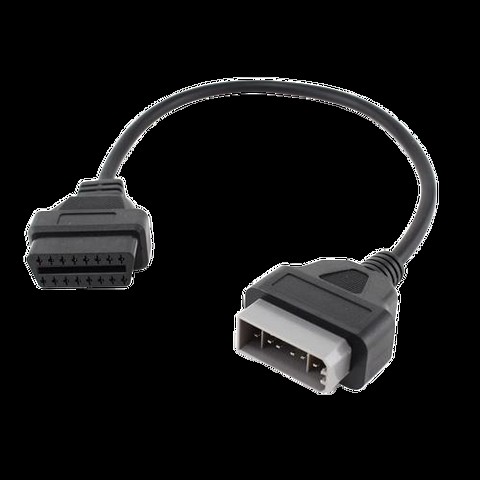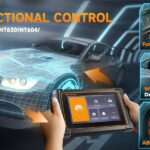Navigating the world of car diagnostics can be confusing, especially when you encounter terms like OBD1 and OBD2. A common question for car owners is: Will an OBD2 reader work on an OBD1 system? This article will clarify the differences between these systems and definitively answer whether you can use an OBD2 reader on an older, OBD1 vehicle.
Understanding OBD1 and OBD2 Diagnostic Systems
OBD stands for On-Board Diagnostics. These systems are crucial for monitoring your vehicle’s performance and identifying potential issues. Think of them as your car’s internal health check system. There are two main generations: OBD1 and OBD2.
OBD1 was the earlier version, used in vehicles manufactured up to the mid-1990s, and in some cases, even later depending on the manufacturer. OBD2 is the more standardized and advanced system that became mandatory in the USA in 1996 and gradually adopted worldwide. Generally, if your car is from 2006 or newer, it will almost certainly be OBD2.
While OBD1 served its purpose, it lacked standardization. Each car manufacturer often had its own diagnostic connectors, communication protocols, and trouble codes. This made diagnosing issues across different makes and models complicated.
OBD2 was designed to address these limitations. It introduced a standardized 16-pin diagnostic connector, a common set of diagnostic trouble codes (DTCs), and improved access to vehicle data. This standardization made it easier for mechanics and car owners to diagnose problems using universal scan tools.
Can You Use an OBD2 Reader on an OBD1 System?
The straightforward answer is no, an OBD2 reader will not work on an OBD1 system. Despite the potential confusion and availability of adapter cables, the fundamental incompatibility lies in the communication protocols.
OBD1 and OBD2 systems use different communication languages. An OBD2 reader is designed to speak the “OBD2 language,” which an OBD1 system simply doesn’t understand. Think of it like trying to use a French translator to understand a conversation in Spanish – while related, they are distinct languages and require different tools for interpretation.
Even if you use an adapter to physically connect an OBD2 reader to an OBD1 port, it won’t bridge this communication gap. The adapter might change the shape of the connector, but it cannot magically convert the diagnostic protocol from OBD1 to OBD2.
The Myth of OBD Adapters for Compatibility
Adapters for OBD systems can be misleading. While they allow you to physically plug an OBD2 reader into an OBD1 port (or vice versa in some cases), they do not make the systems compatible at a functional level.
Nissan 14-pin OBD1 adapter cable for older Nissan vehicles.
The primary purpose of these adapters is to accommodate the different connector shapes and pin layouts used in OBD1 systems. Some older vehicles had non-standard diagnostic ports, and adapters simply allow tools with standard OBD2 connectors to physically interface with these ports. However, they do not change the underlying diagnostic protocol.
Therefore, if you have an OBD1 vehicle, you need a scan tool that is specifically designed to communicate with OBD1 protocols. A generic, inexpensive OBD2 reader will not work, even with an adapter.
Identifying OBD1 Ports and Adapters
OBD1 ports come in various shapes and sizes, and their locations can also vary. Unlike the standardized OBD2 port, OBD1 ports were not consistently placed. You might find them under the dashboard, in the engine bay, or even in the center console, depending on the vehicle manufacturer and model.
Toyota 22-pin OBD1 port commonly located in the engine bay of older Toyota vehicles.
Common OBD1 port types include:
- 12-pin ALDL (Assembly Line Diagnostic Link): Found in many General Motors vehicles.
- Ford EEC-IV (Electronic Engine Control IV): Used in older Ford models.
- Toyota 22-pin and 17-pin connectors: Used in older Toyota vehicles, often located in the engine bay.
- Nissan 14-pin connector: Used in older Nissan vehicles.
To use a modern scan tool with these OBD1 ports, you will typically need a specific adapter cable that matches the port type in your vehicle.
Choosing the Right Scan Tool for Your Vehicle
If you own an OBD1 vehicle and need to perform diagnostics, it’s essential to choose a scan tool that explicitly states it is compatible with OBD1 protocols. Many professional-grade scan tools are designed to be backward compatible, meaning they can read both OBD1 and OBD2 systems.
Standard OBD2 16-pin port, typically located under the dashboard on the driver’s side.
These tools often come with a set of adapters to connect to various OBD1 port types. When selecting a scan tool, always verify its compatibility with your vehicle’s make, model, and year to ensure it supports the correct OBD protocol.
In conclusion, an OBD2 reader is not compatible with OBD1 systems, and using an adapter will not change this fundamental incompatibility. To diagnose OBD1 vehicles, you require a scan tool specifically designed for OBD1 protocols, potentially with adapter cables to fit your vehicle’s diagnostic port. Always double-check your vehicle’s specifications and the scan tool’s capabilities to ensure proper diagnosis and avoid frustration.

